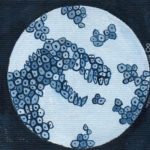Link to Pubmed [PMID] – 29770275
Link to DOI – 10.7717/peerj.4754
PeerJ 2018 ; 6(): e4754
Plant-microbial interactions in the litter layer represent one of the most relevant interactions for biogeochemical cycling as litter decomposition is a key first step in carbon and nitrogen turnover. However, our understanding of these interactions in the litter layer remains elusive. In an old-growth mixed Nothofagus forest in Patagonia, we studied the effects of single tree species identity and the mixture of three tree species on the fungal and bacterial composition in the litter layer. We also evaluated the effects of nitrogen (N) addition on these plant-microbial interactions. In addition, we compared the magnitude of stimulation of litter decomposition due to home field advantage (HFA, decomposition occurs more rapidly when litter is placed beneath the plant species from which it had been derived than beneath a different plant species) and N addition that we previously demonstrated in this same forest, and used microbial information to interpret these results. Tree species identity had a strong and significant effect on the composition of fungal communities but not on the bacterial community of the litter layer. The microbial composition of the litter layer under the tree species mixture show an averaged contribution of each single tree species. N addition did not erase the plant species footprint on the fungal community, and neither altered the bacterial community. N addition stimulated litter decomposition as much as HFA for certain tree species, but the mechanisms behind N and HFA stimulation may have differed. Our results suggest that stimulation of decomposition from N addition might have occurred due to increased microbial activity without large changes in microbial community composition, while HFA may have resulted principally from plant species’ effects on the litter fungal community. Together, our results suggest that plant-microbial interactions can be an unconsidered driver of litter decomposition in temperate forests.

